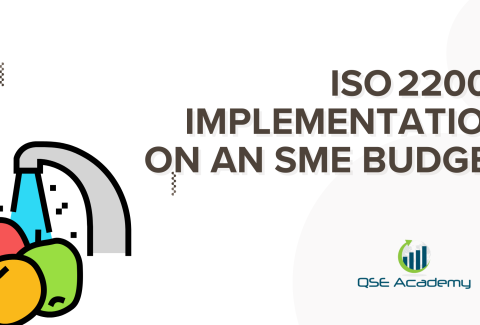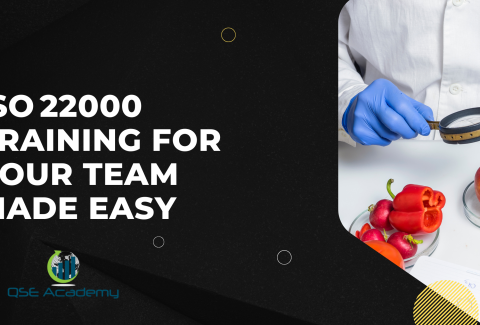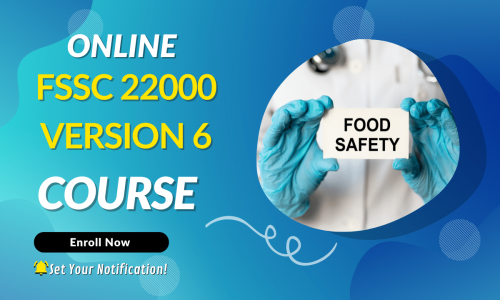WHAT IS ISO 22000?
Last Updated on July 4, 2025 by Melissa Lazaro
ISO 22000 is a management system standard that provides a framework to ensure the safe operation of food businesses.
Food safety risk assessment, measuring performance through critical control points (CCPs), verification, and corrective actions are essential elements of a good management system. ISO 22000 also covers all aspects of supply chain management, including suppliers and subcontractors. This ensures that everyone who comes in contact with food has the necessary knowledge and skills to comply with the required hygiene standards. It provides guidance on good housekeeping, HACCP-based food safety procedures, training programs for workers, and preventive maintenance programs for plant equipment.
ISO 22000 is applicable to the management of all the operations in an organization that affect food safety. Companies and organizations that are certified according to ISO 22000 provide confirmation of adequate procedures for products and services provided.
It is a general management system standard based on HACCP principles, intended for use by any type of organization in any type of industry where food safety is critical. It was developed by ISO technical committee ISO/TC 207 (Food safety systems) and published in May 2005 as international standard ISO 22000:2005.
The third version of ISO 22000 was published in 2018, ISO 22000:2018.
The standard allows companies to develop and implement food safety plans based on the principles of Hazard Analysis Critical Control Points (HACCP) but can be used independently of HACCP. The standard does not specify how to achieve food safety in an organization. It delegates this responsibility to the organization’s management, which can operate under any way of providing food safety that is appropriate for the business.
Several companies have published their food safety plans based on ISO 22000 as guides for others wishing to do the same.
ISO 22000 is based on HACCP principles but does not specify how to achieve food safety in an organization. It delegates this responsibility to the organization’s management, which can operate under any way of providing food safety that is appropriate for the business. The standard does not specify a particular HACCP system or frequency of monitoring. In addition, the standard allows organizations to integrate all their operations over their supply chain including suppliers and subcontractors. This ensures that everyone who comes into contact with food has the necessary knowledge and skills to comply with hygiene requirements. The practice of continual improvement is also emphasized in the standard.
The standard applies to a wide range of organizations in many industries. It is not restricted to food and drink production, although it is primarily designed for that purpose. Food businesses producing non-hazardous food items, such as bakery products, which also require safety advice, may also find value in the standard. It may be used in other industries producing food items for human or animal consumption. As with any general management system, the standard will only be effective if management systems are developed by senior management following a risk-based approach from A to Z, drawing on their experience and knowledge within their particular application.
The standard does not cover all aspects of food safety, nor all the requirements that may need to be met by a business, but rather provides guidance in areas of common interest among many types of organizations. It may be used in conjunction with other standards where a business has identified specific requirements that are not covered in ISO 22000. This approach is efficient, as it allows businesses to develop a management system according to their particular needs and requirements.
How ISO 22000 can be implemented?
Filling out and signing off the form is a way of showing that you understand the requirements of the standard. It is important to do this with your manager or senior executive as they are responsible for providing a management system within their organization. Each business should have a senior management group responsible for its management system that will ensure that processes are carried out by everyone in the organization.
The management system should work in collaboration with all other control systems within the organization. ISO 22000 recommends using six areas for control: hazard identification, HACCP plan development, HACCP and non-HACCP risk analysis, critical control points (CCPs), verification, and corrective actions.
It is important to identify what food safety risks the organization may face. This includes threats from dangerous or toxic chemicals, biological agents such as bacteria and viruses, physical hazards such as temperature and humidity extremes, food allergens, and other substances such as pesticides or veterinary drug residues.
Establishing CCPs is an important step towards the prevention of food safety risks. These are points at which food safety risks are identified and as a result, preventive action should be taken. The places where these critical control points can be found will depend on the types of food products produced by the organization. If it produces a wide range of products, it may need to identify CCPs for each type of product that it produces.
The HACCP plan is a process by which all identified risks are analyzed and then steps are taken to prevent them from occurring. This may include procedures for sample collection and testing, and appropriate sanitization and cleaning methods.
A CCP and all other areas of the food safety plan should be controlled by a HACCP plan that is documented as a management system.
It is important to have appropriate controls in place to monitor food safety risks throughout the organization’s operations. These should include records of critical incidents, adverse analytical findings, and their causes. This information will be used to make improvements in the HACCP plan.
To verify that all control points are actually being observed, it is necessary to conduct an internal audit of the HACCP plan and test results against those of the actual production process. This process must be independent of the business itself for obvious reasons.
Looking for More Resources on ISO 22000?
If you found this article helpful, explore our premium resources designed to help you achieve ISO 22000 certification efficiently:
- Complete Documentation Package for ISO/IEC 22000 2018: Get all the essential templates and documents you need for fast, easy implementation.
- Online Course on ISO/IEC 22000 2018 : Enroll in our comprehensive training to master the key concepts and practical steps toward certification.
- ISO/IEC 22000 2018 Checklist: Download our detailed checklist to ensure you’ve covered every step of the process.
These resources are tailored to meet your needs and ensure a smooth certification journey. Explore them today and get one step closer to success!


















